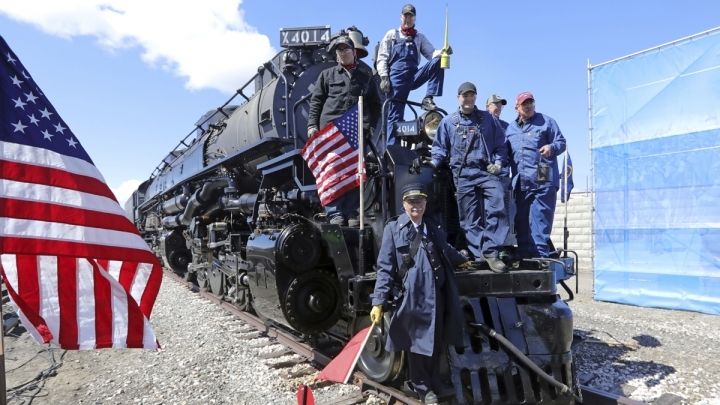White House marks 150th anniversary of first transcontinental railway, lauds role of Chinese workers
The White House issued a statement Friday marking the 150th anniversary of the completion of the country's first transcontinental railroad, highlighting the important role Chinese workers played in achieving the feat.
![Margaret Yee, whose ancestors helped build the railroad, pose in front of the the Big Boy, No. 4014 during the commemoration of the 150th anniversary of the Transcontinental Railroad completion at Union Station Thursday, May 9, 2019, in Ogden, Utah. Yee, helped tap a ceremonial spike alongside Utah Gov. Gary Herbert and a descendant of Union Pacific's chief engineer on the project at the event Thursday in Ogden, Utah. [Photo: AP/Rick Bowmer]](https://p1crires.cri.cn/01dcri/images/zhycms_chinaplus/20190511/aa580701-7dfd-4b0e-9ee1-ba001b3ec55b.jpg?x-oss-process=image/resize,w_650)
Margaret Yee, whose ancestors helped build the railroad, pose in front of the the Big Boy, No. 4014 during the commemoration of the 150th anniversary of the Transcontinental Railroad completion at Union Station Thursday, May 9, 2019, in Ogden, Utah. Yee, helped tap a ceremonial spike alongside Utah Gov. Gary Herbert and a descendant of Union Pacific's chief engineer on the project at the event Thursday in Ogden, Utah. [Photo: AP/Rick Bowmer]
"We honor the undaunted efforts of the people who made this innovation possible, including workers of Irish and Chinese descent, as well as freed slaves, Native Americans, Civil War veterans, and Latter-day Saints," the statement said.
"Roughly 12,000 workers of Chinese ancestry worked to dig out a particularly challenging section. Through blizzards and other treacherous weather, they blasted and chiseled 15 tunnels through the hard granite of the Sierra Nevada Mountains," the statement read.
What was not mentioned in the statement was the fact that despite the sacrifices the Chinese workers made, they were subject to discrimination and oppression by U.S. society.
In 1882, the U.S. Congress passed the Chinese Exclusion Act that prohibited the immigration of Chinese workers. It was the first U.S. law implemented to prevent all members of a specific ethnic or national group from immigrating to the country.
On May 10, 1869, two parts of a railroad that ran between Omaha, Nebraska and Sacramento, California, merged in the Western state of Utah, marking the completion of the six-year project.
The statement said the completion of the project, which linked the west coast to the existing eastern rail network with a 3,200-km railway, enabled people and goods to move from one coast to another in as little as one week.
"Our nation was changed forever" by the railroad, the statement said, as it greatly boosted the westward expansion, bringing forth profound changes to U.S. society.


